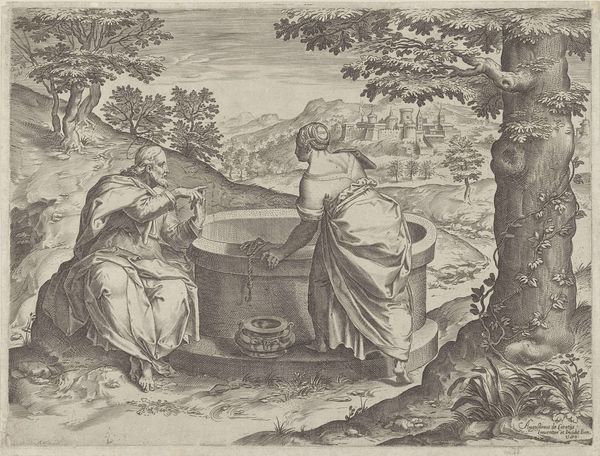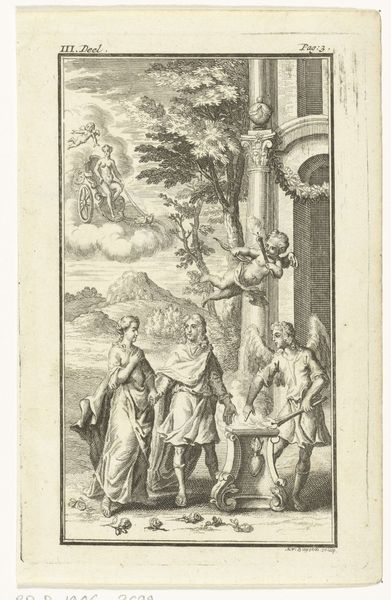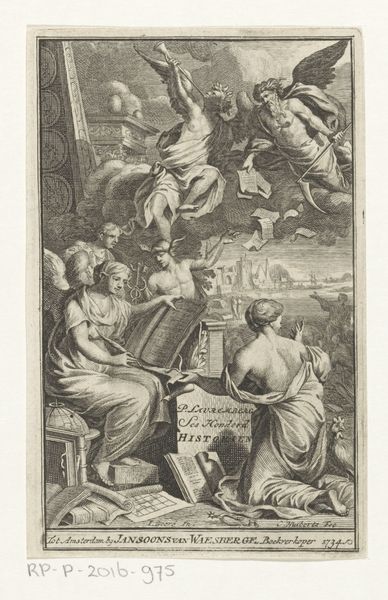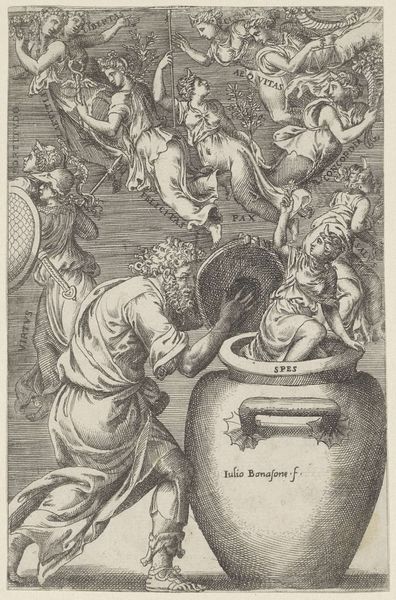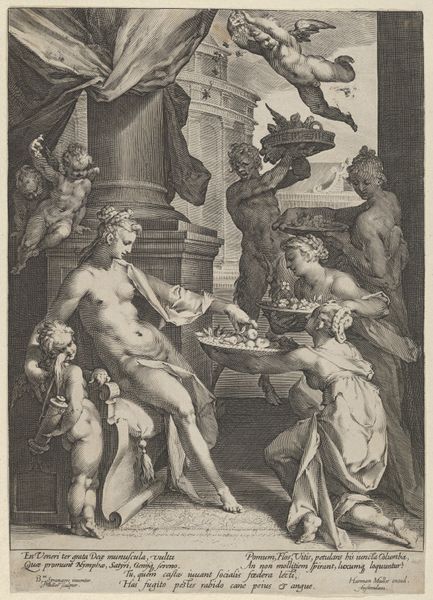
Dimensions: width 207 mm, height 286 mm
Copyright: Rijks Museum: Open Domain
Curator: Here we have Julius Goltzius's engraving, "Christus en de Samaritaanse vrouw," created in 1586. It depicts the encounter between Christ and the Samaritan woman at the well. Editor: The stark contrast immediately grabs you. The heavy lines and detailed cross-hatching create a dramatic effect, emphasizing the figures and the deep shadows around the well. Curator: Absolutely. Engravings like this were incredibly labor-intensive. The artist had to meticulously carve lines into a metal plate, ink it, and then transfer the image to paper using a printing press. It was a craft requiring incredible skill. The availability of these prints also helped circulate religious narratives and ideas more widely throughout society. Editor: And look at the way Goltzius has used line to define form! Notice the woman's musculature, emphasized by the strong curves, contrasting against the softer lines depicting Christ. The well itself, a rigid geometric form, anchors the composition. It’s all about contrast: light and shadow, hard and soft. Curator: Beyond the formal elements, consider the social context. The act of Christ speaking to the Samaritan woman was quite radical. It challenged social norms concerning interactions between men and women, and especially Jewish men and Samaritan women, revealing underlying tensions within that society. Editor: Interesting. I see that, but I’m drawn to how the well's pulley and the bucket seem to almost mirror the figures themselves. The curve of the rope mirrors the curve of the woman’s arm as she lifts the heavy vessel, and Christ’s gesture pointing into the well seems like an invitation into its depths, into knowledge itself. Curator: Indeed, engravings could translate biblical stories into accessible, reproducible images, impacting social behaviors. We can consider the labor involved—both physical, as a process, and ideological in the translation of scripture. Editor: Ultimately, the piece speaks to the transformative power of encounter, visualized through stark lines, balanced forms, and dramatic light. Curator: Yes, a fascinating intersection of skill, belief, and social dynamics, permanently etched in ink.
Comments
No comments
Be the first to comment and join the conversation on the ultimate creative platform.
